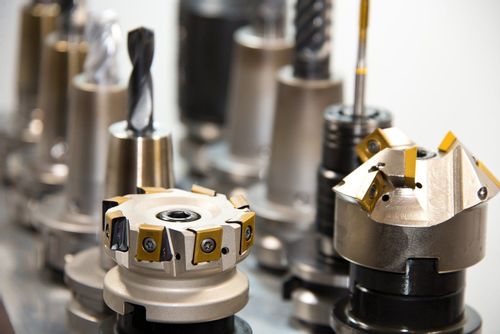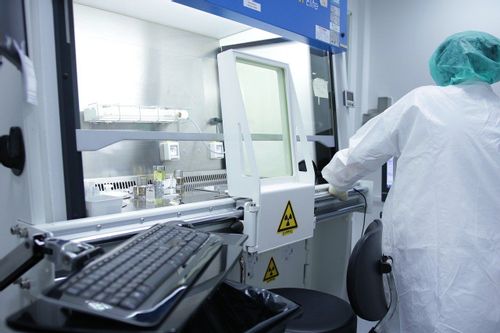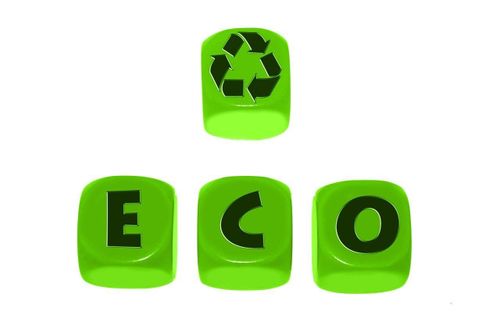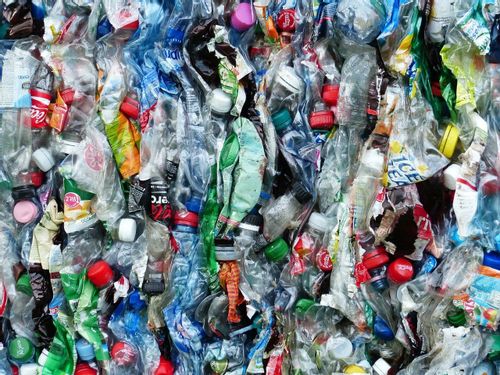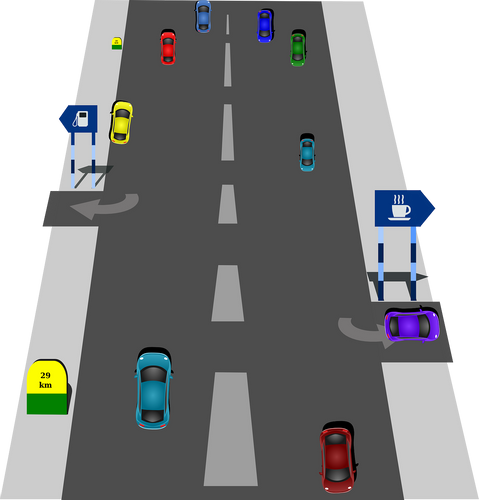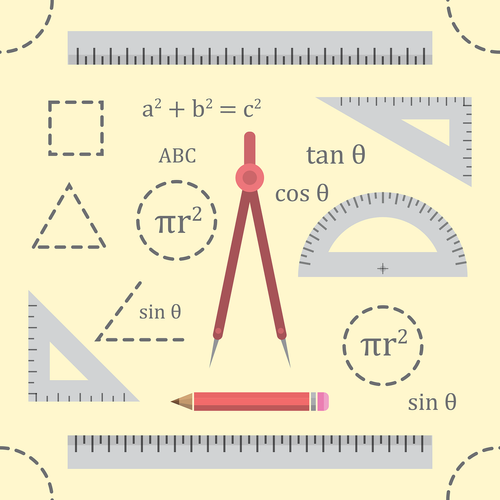Standards Packages
iTeh together with SIST has developed and compiled a comprehensive collection of standard packages to support your standard requirements. Our packages cover an array of content that includes quality management, risk management, road vehicles, machine safety, and much more. With over 200 packages to choose from, you are sure to find a collection to suit your standard needs.
Latest Standards
This document specifies a test method for the determination of the flexural strength of ceramic matrix composite materials with continuous fibre reinforcement, under three-point or four-point bend at room temperature. This document is applicable to all ceramic matrix composites with a continuous fibre reinforcement, unidirectional (1D), bidirectional (2D), and tridirectional xD with (2 < x ≤ 3) as defined in ISO 19634, loaded along one principal axis of reinforcement.
- Standard15 pagesEnglish languagesale 10% offe-Library read for1 day
This document gives guidance on the issues related to the conformity assessment of explosives manufactured on-site.
On one hand, it specifies requirements to be considered for the assessment during the design phase of the explosive and a simple and robust approach to follow for the assessment of the conformity in the production phase.
And on the other hand, it specifies requirements for the mobile manufacturing units and their accessories as a contribution to the guarantee of the conformity of explosives produced in on-site conditions with no access to a laboratory.
This document gives guidance on also basic requirements for explosives loading equipment.
This document does not apply to the preparation of multi-component explosives as they neither require manufacturing equipment nor mechanical loading.
NOTE 1 This document does not address the requirements of the transport of dangerous goods regulations.
NOTE 2 This document does not address the requirements established in Directive 2006/42/EC (Machinery).
NOTE 3 Despite the provisions given in this document, other provisions provided for in state, federal or local regulations apply.
NOTE 4 The intention of this document is not to hinder the development and use of new technologies (including equipment and processes) for the on-site manufacture of explosive, but because of limited access to testing resources on site, the approach consisting of having specified requirements for the equipment is valid to ensure the conformity of future products and technologies.
- Technical specification30 pagesEnglish languagesale 10% offe-Library read for1 day
This document defines a test method to permit a classification according to EN 13123-2:2025 for explosion resistance of windows, doors, shutters as well as curtain walling elements, complete with their frames, infills and fixings. This document gives no information on the ability of the surrounding wall or building structure to resist the direct or transmitted forces.
- Standard20 pagesEnglish languagesale 10% offe-Library read for1 day
This document specifies a method for determining the colour fastness to perspiration of leather of all kinds at all stages of processing. It applies particularly to gloving, clothing and lining leathers, as well as leather for the uppers of unlined shoes.
- Standard14 pagesEnglish languagesale 10% offe-Library read for1 day
The present document defines a dictionary of parameters that are commonly used in multiple TC LI specifications. Aside from defining a dictionary, the present document aims to provide technical means for other specifications to use. It is encouraged to use the present document in the development of new specifications. It is foreseen that regular maintenance of the present document is required. As such, release management requirements will be defined. Before accepting any new common parameter, the present document will provide a set of requirements the parameter has to comply to in order to become a common parameter.
- Standard39 pagesEnglish languagesale 15% off
- Technical specification39 pagesEnglish languagesale 10% offe-Library read for1 day
This European standard specifies gas quality characteristics, parameters and their limits, for gases classified as group H that are to be transmitted, injected into and from storages, distributed and utilized.
NOTE For information on gas families and gas groups see EN 437.
This European standard does not cover gases conveyed on isolated networks.
For biomethane, additional requirements indicated in prEN 16723 1 apply.
- Standard + National Annex and/or Foreword102 pagesForeword and/or annex in Slovenian language, body of the standard in English languagesale 10% offe-Library read for1 day
This document defines a test method to permit a classification according to EN 13123-1:2025 for explosion resistance of windows, doors, shutters as well as curtain walling elements, complete with their frames, infills and fixings. This document gives no information on the ability of the surrounding wall or building structure to resist the direct or transmitted forces.
- Standard19 pagesEnglish languagesale 10% offe-Library read for1 day
- Corrigendum1 pageEnglish languagesale 10% offe-Library read for1 day
This document specifies the classification, requirements and test methods for endodontic sealing materials used in dentistry.
This document is applicable to materials used for conventional orthograde endodontic sealing (Type 1) and materials used for other endodontic sealing procedures including apexification, perforation filling, resorption treatment or retrograde root-end filling (Type 2).
The Type 2 endodontic sealing materials may be used for vital pulp therapy. However, this document does not address or include requirements for vital pulp therapy.
This document does not specify requirements or test methods for sterility.
NOTE 1 Reference to applicable national regulations and internationally accepted pharmacopeias can be made.
NOTE 2 National requirements regarding sterilization processes, if available, can be used. Standards on methods of validating sterilization processes are also available: ISO 11737-1, ISO 11737-2 and ISO 11737-3.
- Standard29 pagesEnglish languagesale 10% offe-Library read for1 day
This document defines terms related to security and resilience topics.
- Standard26 pagesEnglish languagesale 10% offe-Library read for1 day
IEC 60794-1-130:2025 describes test procedures to evaluate the coefficient of dynamic friction of the sheathing material of a cable when pulled over or between other cables. Methods E30A and E30B evaluate the coefficient of friction between cables for when either a cable is pulled over the top of other cables (drum test) or when pulling a cable between other cables of the same shape (flat plate test). This document applies to optical fibre cables for use with telecommunication equipment and devices employing similar techniques, and to cables having a combination of both optical fibres and electrical conductors. Throughout the document, wording "optical cable" can also include optical fibre units and microduct fibre units. This first edition cancels and replaces Method E24 of the first edition of IEC 60794‑1‑21 published in 2015, Amendment 1:2020. This edition constitutes a technical revision.
- Draft11 pagesEnglish languagesale 10% offe-Library read for1 day
- Draft7 pagesEnglish languagesale 10% offe-Library read for1 day
- Standard1 pageEnglish languagesale 15% off
This document provides a method for quantification of marker peptide of type I collagen which was purified products extracted from bovine tissues with liquid chromatography - tandem mass spectrometry (LC-MS/MS). The method described in this document is intended to be used for marker peptide detection of purified bovine type I collagen which will be used for constructing tissue-engineered medical products (TEMPs) or other collagen-based biomaterials, for product quality control. This method also can be used for qualitative analysis and quantitative detection of bovine-specific and/or type I-specific collagen in the samples mixed with other animal sources and/or other type collagen. This document does not exclude other possible methods for quantifying type I collagen, such as hydroxyproline quantification, that can evaluate the total amount of collagen regardless of type. NOTE 1 The collagen has been known there are greater than 28 types and with the different property in each one. This document focuses on the quantification of marker peptide of purified bovine type I collagen. Type I collagen isolated from skin, tendon, bone, etc., can contain other types of collagen, for example, type III and type V. And type I collagen can be sourced from bovine, swine, etc. For quantification of other types of collagens or type I collagen sourced from other species of animals can use this document as a template, but need to design collagen type-specific or/and animal species-specific characteristic peptides for LC-MS/MS method, as well as optimize the determination conditions. NOTE 2 For quantification of the collagen marker peptide of scaffold which combined with other materials, or type I collagen contained in ECM materials of tissues or type I collagen-based regenerative tissues, can refer to this document, but need to isolate or/and purify the type I collagen with a reasonable and verified method at first (9,10), and then quantify it by referring to the method provided in this document.
- Standard10 pagesEnglish languagesale 15% off
This document specifies a test procedure to simulate and to evaluate lumbar and cervical spinal disc prostheses wear under adverse impingement conditions.
- Standard15 pagesEnglish languagesale 15% off
IEC 61643-11:2025 is applicable to devices for surge protection against indirect and direct effects of lightning or other transient overvoltages. These devices are intended to be connected to AC power circuits and equipment rated up to 1 000 V RMS, the preferred frequencies taken into account in this document are 50/60 Hz. Other frequencies are not excluded. Performance and safety requirements, tests and ratings are specified in this document. These devices contain at least one nonlinear component and are intended to limit surge voltages and divert surge currents. The test requirements provided by this document are based on the assumption that the SPD is connected to an AC power circuit fed by a power source providing a linear voltage-current characteristic. When the SPD is to be connected to a different kind of source or to a different frequency, careful consideration is required. This mainly applies with regard to system and fault conditions to be expected in such a system (e.g. expected short circuit current, TOV-stresses). This document can apply for railway applications, when related product standards do not exist for that area or for certain applications. Based on a risk assessment it might not be necessary to apply all requirements of this document to SPDs designed for specific power applications only, e.g. circuits with a low power capability, circuits supplied by nonlinear sources, circuits with protective separation from the utility supply. NOTE 1 More information on risk assessment is provided in IEC Guide 116. NOTE 2 Other exclusions based on national regulations are possible. This edition includes the following significant technical changes with respect to the previous edition: a) Specific requirements for SPDs for AC applications are now contained in this document, whereas the common requirements for all SPDs are now contained in IEC 61643-01; b) Clarification on test application either to a complete SPD, to a "mode of protection", or to a complete "SPD assembly"; c) Additional measurement of voltage protection level on "combined modes of protection" between live conductors and PE; d) Additional duty test for T1 and T2 SPDs with follow current to check variation of the follow current value at lower impulse currents; e) Modified and amended short circuit current test requirements to better cover up to date internal SPD disconnector technologies; f) Improved dielectric test requirements for the SPD's main circuits and added dielectric test requirements for "electrically separated circuits"; g) Additional clearance requirements for "electrically separated circuits". The requirements of this document supplement, modify or replace certain of the general requirements contained in IEC 61643-01 and shall be read and applied together with the latest edition of IEC 61643-01, as indicated by the undated normative reference in Clause 2 of this document.
- Draft34 pagesEnglish languagesale 10% offe-Library read for1 day
IEC 61116:2025 used as a guidance that applies to hydroelectric installations containing impulse or reaction turbines with unit power up to about 15 MW and reference diameter of about 3 m. These figures do not represent absolute limits. This document deals only with the direct relations between the purchaser or the consulting engineer and the supplier. It does not deal with civil works, administrative conditions or commercial conditions. This document is intended to be used by all concerned in the installation of electromechanical equipment for small hydroelectric plants. This document, based essentially on practical information, aims specifically at supplying the purchaser of the equipment with information which will assist him with the following: preparation of the call for tenders; - evaluation of the tenders; - contact with the supplier during the design and manufacture of the equipment; - quality control during the manufacture and shop-testing; - follow-up of site erection; - commissioning; - acceptance tests; - operation and maintenance. The document comprises the following: a) general requirements for the electromechanical equipment of small hydroelectric installations; b) technical specifications for the electromechanical equipment, excluding its dimensioning and standardization; c) requirements for acceptance, operation and maintenance This second edition cancels and replaces the first edition published in 1992. This edition includes the following significant technical changes with respect to the previous edition: a) harmonization of scope with IEC 62006; b) introduction of new technical aspects; c) overall editorial revision.
- Draft52 pagesEnglish languagesale 10% offe-Library read for1 day
This document provides a list of recommended ISO cryptographic algorithms for use within applicable ISO TC 68, Financial services, standards. It also provides strategic guidance on key lengths and associated parameters and usage dates. This document focuses on core algorithms, key lengths and frequently used mechanisms. The included algorithms are considered to be fit for purpose for financial service use. For additional algorithms, see the body of standards produced by ISO/IEC JTC 1 SC 27, Information security, cybersecurity and privacy protection. For standards on key management, see ISO 11568. The categories of algorithms covered are: a) block ciphers and modes of operation; b) stream ciphers; c) message authentication codes (MACs); d) authenticated encryption algorithms; e) format preserving encryption; f) hash functions; g) asymmetric algorithms: 1) digital signature schemes giving message recovery; 2) digital signatures with appendix; 3) asymmetric ciphers. h) authentication mechanisms; i) key derivation, establishment and agreement mechanisms; j) key transport mechanisms: 1) key wrapping. This document does not define any cryptographic algorithms. However, the standards to which this document refers contain necessary implementation information as well as more detailed guidance regarding choice of security parameters, security analysis and other implementation considerations.
- Technical specification36 pagesEnglish languagesale 15% off
This document applies to force-controlled thermo-mechanical fatigue (TMF) testing. Both forms of control, force or stress, can be applied according to this document. This document describes the equipment, specimen preparation, and presentation of the test results to determine TMF properties.
- Standard29 pagesEnglish languagesale 15% off
This document specifies three procedures, A, B and C, using the Pensky-Martens closed cup tester, for determining the flash point of combustible liquids, liquids with suspended solids, liquids that tend to form a surface film under the test conditions, biodiesel and other liquids in the temperature range of 40 °C to 370 °C. NOTE 1 Although, technically, kerosene with a flash point above 40 °C can be tested using this document, it is standard practice to test kerosene according to ISO 13736.[ REF Reference_ref_9 \r \h 5 08D0C9EA79F9BACE118C8200AA004BA90B0200000008000000100000005200650066006500720065006E00630065005F007200650066005F0039000000 ] Similarly, lubricating oils are normally tested according to ISO 2592.[ REF Reference_ref_6 \r \h 2 08D0C9EA79F9BACE118C8200AA004BA90B0200000008000000100000005200650066006500720065006E00630065005F007200650066005F0036000000 ] Procedure A is applicable to distillate fuels (diesel, biodiesel blends, heating oil and turbine fuels), new and in-use lubricating oils, paints and varnishes, and other homogeneous liquids not included in the scope of procedures B or C. Procedure B is applicable to residual fuel oils, cutback residuals, used lubricating oils, mixtures of liquids with solids, and liquids that tend to form a surface film under test conditions or are of such kinematic viscosity that they are not uniformly heated under the stirring and heating conditions of procedure A. Procedure C is applicable to fatty acid methyl esters (FAME) as specified in specifications such as EN 14214[ REF Reference_ref_15 \r \h 11 08D0C9EA79F9BACE118C8200AA004BA90B0200000008000000110000005200650066006500720065006E00630065005F007200650066005F00310035000000 ] or ASTM D6751.[ REF Reference_ref_17 \r \h 13 08D0C9EA79F9BACE118C8200AA004BA90B0200000008000000110000005200650066006500720065006E00630065005F007200650066005F00310037000000 ] This document is not applicable to water-borne paints and varnishes. NOTE 2 Water-borne paints and varnishes can be tested using ISO 3679.[3] Liquids containing traces of highly volatile materials can be tested using ISO 1523[1] or ISO 3679.
- Standard27 pagesEnglish languagesale 15% off
- Standard29 pagesFrench languagesale 15% off
Benefits

Full Standards Solution
Our catalog includes not only latest standards but also full meta information about related standardization project lifecycle.

Cost Effective
Our PRICE MATCH GUARANTEE policy with multi-level volume discounts gives our clients the best option in the market. In addition, you can get access to the standards for 3, 10, or 30 days.

Stay Notified
Get alerted to the latest revisions and new standards in the Weekly Newsletter. Standards are constantly changing. Don’t miss a revision that can impact your business.
About Us
iTeh Inc is a software development and IT consulting team of professionals who provide consulting, development and implementation of solutions for all types of businesses.
In cooperation, with the Slovenian Institute of Standardization (SIST), we create a unique solution that covers all aspects of the lifecycle of Standardization organizations. iTeh Standards is a part of the solution that helps SIST to provide and sell their products to Customers.
iTeh Standards Store is an evolving project, our goal is to build long-term relationships with our customers. We believe in delivering quality services to solve our customers' challenges and define success by exceeding our customers' expectations. We are always ready to listen and our experience allows us to provide our customers with helpful effective suggestions. You can contact us by email.
We are committed to providing the best possible experience for our customers.
Compliance with international standards is increasingly becoming one of the key competitive advantages in the global market. Our company creates all conditions for the most comfortable implementation of new documents and norms in the processes carried out by your organization. Some of the key advantages of working with us are:
- Cost-effective - multi-level discounts and permanent updates of the functions give our clients the best option on the market.
- e-Library - access to standards for a period of time of your choice. It is a cost-effective solution for keeping updated with the newest standards.
- Company-wide documents - create a company account and connect all employees with access to purchased standards, e-Library documents, and packages.
- All in one spot - all purchased standards are kept in one place with controlled access by the account administrator.
- Client-centric - providing quality consulting is the prerogative and incentive to create new products that accompany your success and scale.
- 24 / 7 client support
We are dedicated to building mutually beneficial and long-term relationships with our clients. That is why our team focuses on creating services to help our customers develop and achieve new productive results.










